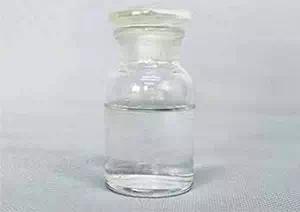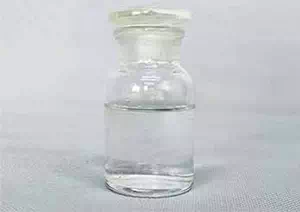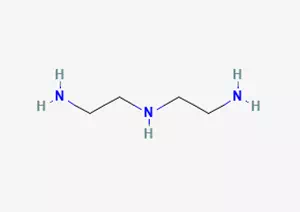All Categories



Diethylenetriamine CAS 110-40-0, Diethylenetriamine, CAS 110-40-0
Chemical Name: Diethylenetriamine (also known as diethylenetriamine or diethylenetriamine)
CAS : 111-40-0
Formula : C4H13N3
Mol. wt. : 103.17
EINECS : 203-865-4
| CAS | 111-40-0 |
| Molecular formula | C4H13N3 |
| Molecular weight | 103.17 |
| EIENCS | 203-865-4 |
| Form | Liquid |
| Melting point | -40°C |
| boling point | 206°C |
| Density | 0.955 g/mL at 25°C |
| Solubility | / |
| PKA | pK1:4.42(+3);pK2:9.21(+2);pK3:10.02(+1) (25°C) |
| Color | Clear |
| Storage temp | / |
Chemical Name: Diethylenetriamine (also known as diethylenetriamine or diethylenetriamine)
Molecular formula: C₄H₁₃N₃
Molecular weight: 103.17 g/mol
CAS Number: 111-40-0 (Note: The "110-40-0" provided by the user may contain a clerical error. The standard CAS is 111-40-0.)
Structural formula: H₂N-CH₂-CH₂-NH ₂-CH₂ -CH₂-NH₂
EINECS No. : 203-865-4
● Chemical Engineering and Materials Synthesis
○ Epoxy resin curing agent: As an efficient curing agent, it is used in electronic insulating materials, coatings and adhesives to enhance mechanical strength and heat resistance (heat distortion temperature 95-124 ℃).
○ Organic synthesis intermediates: synthetic polyamide resins, ion exchange resins, surfactants and lubricating oil additives.
○ Gas purifying agent: Removes acidic gases such as CO₂ and is used for the purification of natural gas and industrial gases.
● Metal processing and electroplating
○ Metal chelating agents: Used in hydrometallurgy to separate heavy metals (such as copper and nickel) and increase metal recovery rates.
○ Cyanide-free electroplating additive: As a diffuser and brightener, it can replace cyanide processes, is environmentally friendly and provides uniform coating.
● Other industrial fields
○ Oilfield chemicals: Viscosity reducers (to lower the viscosity of crude oil) and water blocking agents (to reduce formation water infiltration).
○ Textile and papermaking: Fabric finishing agents enhance wear resistance, and paper strengthening agents improve tear strength.
○ Nuclear industry: Chelating radioactive ions (such as uranium and plutonium), and safely handling nuclear waste.
Health and environmental risks
● Toxicity
○ Acute toxicity: Oral LD₅₀=2080 mg/kg (low toxicity) in rats, transdermal LD₅₀=1090 mg/kg in rabbits.
○ Irritation: Skin contact can cause burns, vapor can irritate the respiratory tract (may cause pulmonary edema), and eye contact can lead to blindness.
○ Sensitization: Approximately 1% of those exposed develop allergic dermatitis or asthma.
○ Environmental impact: Toxic to aquatic organisms. The allowable concentration in surface water is ≤0.2 mg/L (Soviet Union standard).
Operation and storage requirements
● Protective measures
○ When operating, gas masks, acid and alkali resistant suits, goggles and rubber gloves must be worn.
○ Avoid contact with water (releases heat upon contact with water) and oxidants (may cause combustion).
Storage conditions
● Store sealed in a cool and well-ventilated place (≤30℃), protected from moisture by inert gas (nitrogen).
Leakage treatment
● Adsorb with sand or vermiculite. Do not rinse with water. When there is a large-scale leakage, it should be contained in dikes and incinerated for disposal.
* Prompt reply and 24 hours online, professional team to provide best price and high quality product.
* Sample testing support.
* Every batch of products will be tested to ensureits quality.
*The packing also can be according the customers` requirment.
*Any inquiries will be replied within 24 hours.
*we provide Commerical Invoice, Packing List, Bill of loading, COA , Health certificate and Origin certificate. If your markets have any special requirements, let us know.